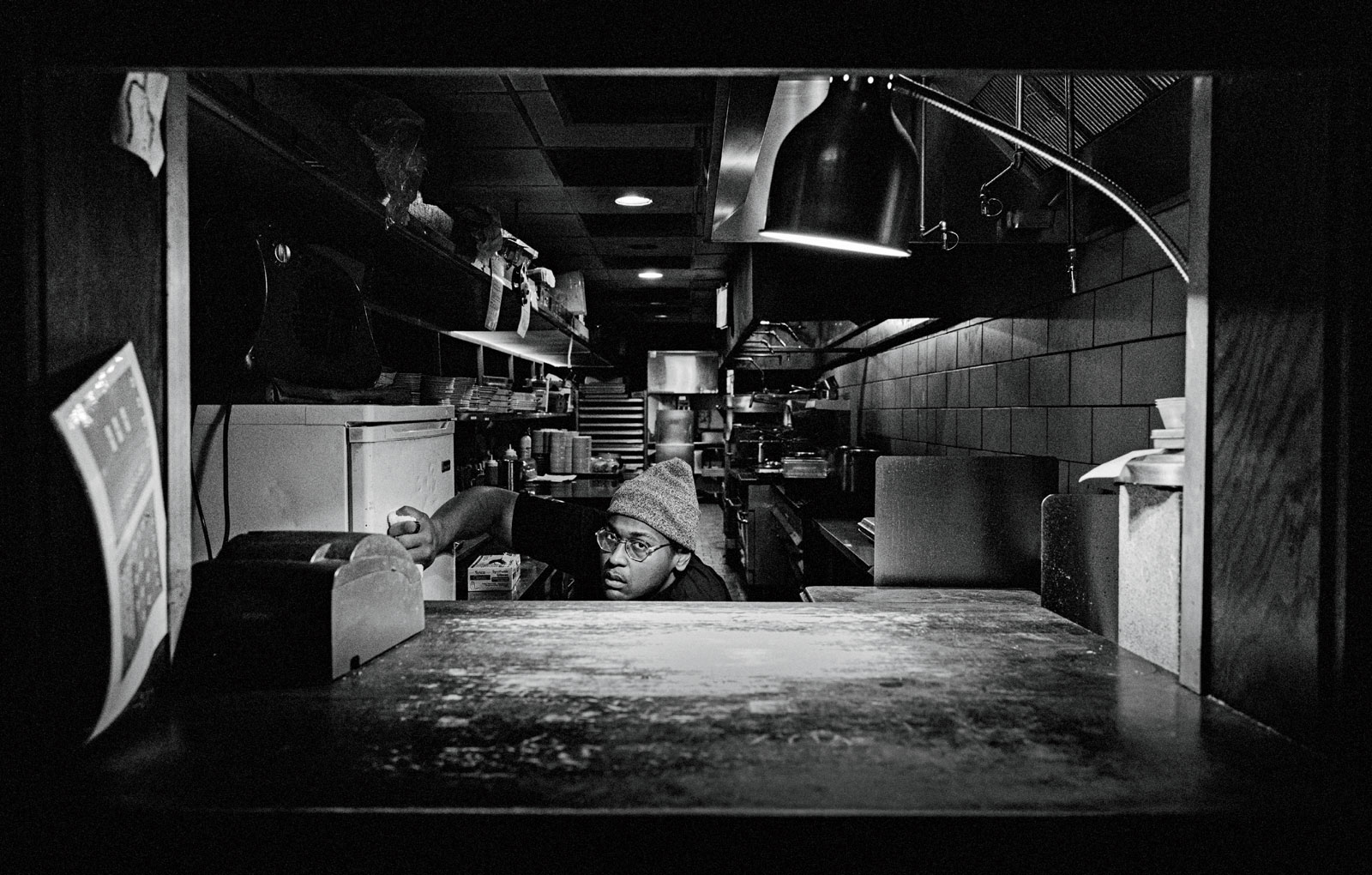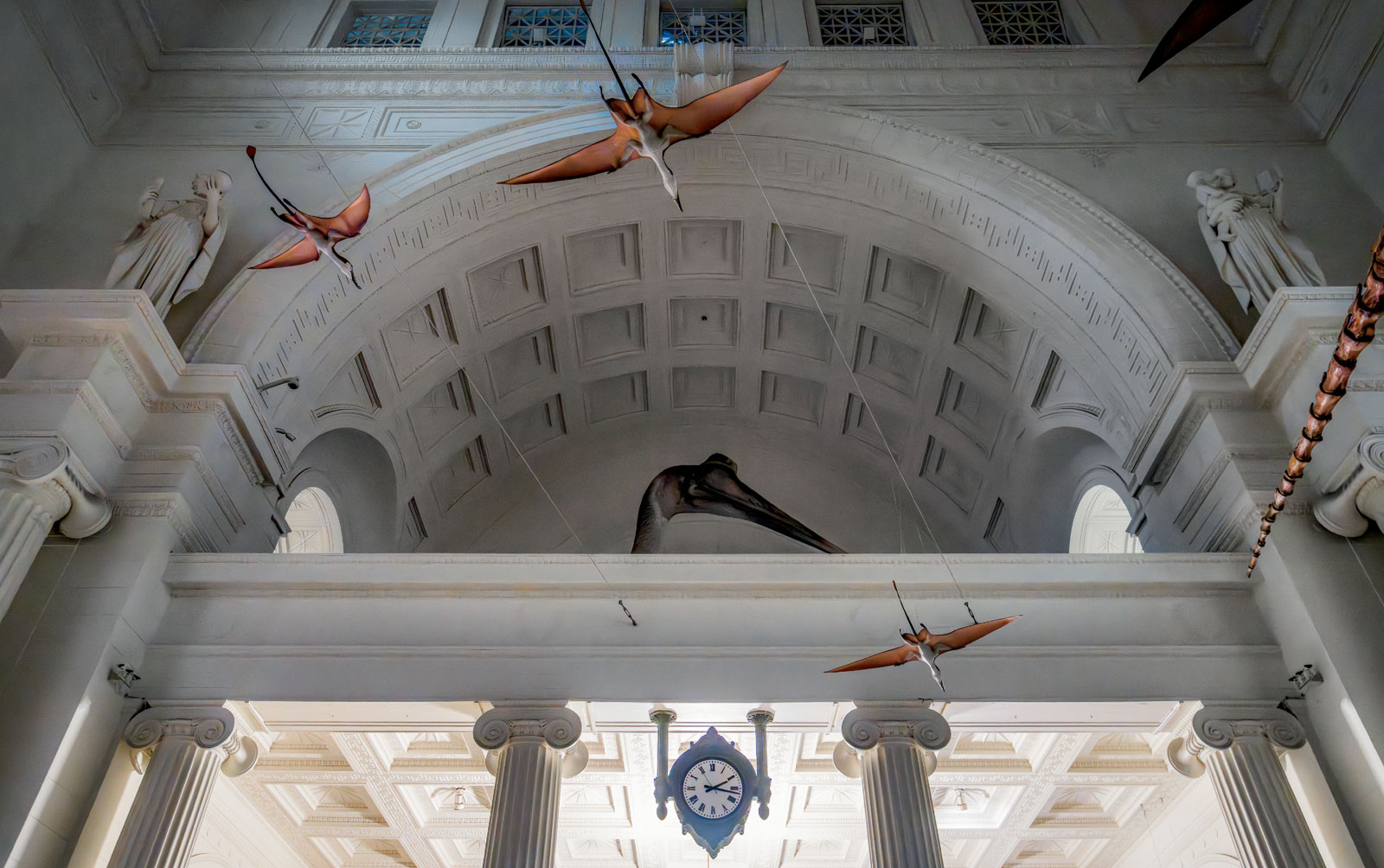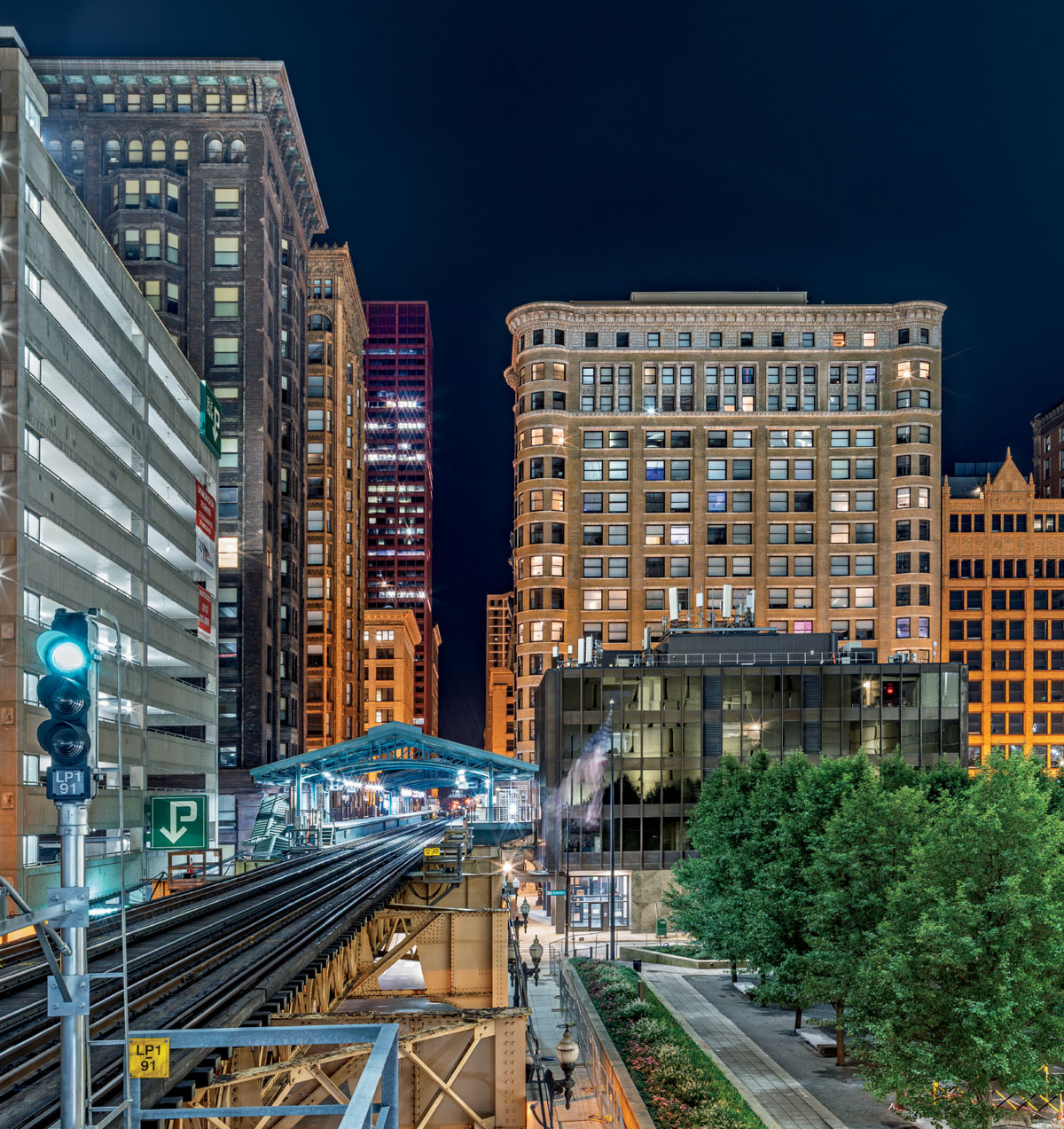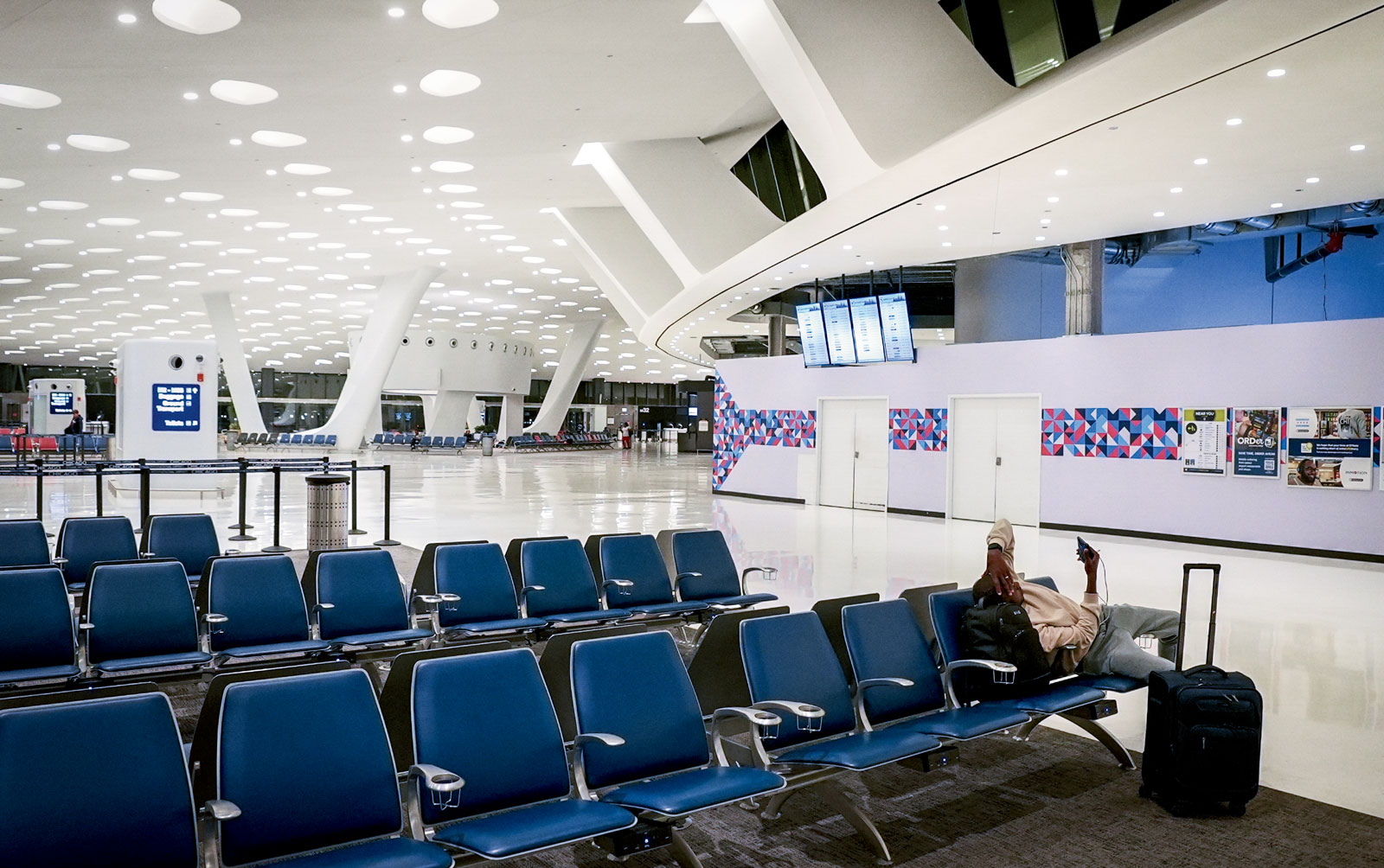CLARISSA BONET: “I was shooting at Don’s Grill on Western Avenue when I saw a bus pass by. As it started to depart the stop, I saw this gentleman come running from around the corner. I could tell he was trying to catch the bus and just missed it. He sat down in the bus shelter, paying no attention to what I was doing. After capturing some shots of the diner, I crossed the street for a second angle. Before I could even get that set up, I saw him illuminated by the light, and he became this kind of silhouette. It was very much my aesthetic, this kind of anonymous individual sitting within the urban landscape. I quickly composed a few frames before a car picked him up, perhaps a rideshare or a friend. Clearly, he had somewhere to be.”

NOLIS ANDERSON: “The average person sees a bar only when it’s open. You don’t get to see the after hours, when the music is off, everything’s quiet, and more of the house lights are on. People are closing out, cleaning up, getting the space prepared for the next day. This image is from the bar area at Moneygun — it’s through the service window that leads into the kitchen. He was wiping the thing down and just looked up, and I grabbed a shot. It really showcases what I was trying to get: that this is still a workplace, still a 9-to-5 for a lot of people, even though it’s 2 in the morning.”

LENNY GILMORE: “The museum at this time feels otherworldly, like you’re walking into somebody’s dream. I was attracted to the clock just because I wanted to anchor the image in this specific moment in time. It speaks to the timelessness of the creatures and this layering of history: the ancient Greek and Roman style, then the prehistoric history on top of that. This image becomes a relic of a relic of a relic.”

DAVE JORDANO: “As much photography as I’ve done in Chicago, I never really go into the Loop. The L is one of Chicago’s most iconic symbols, so I went to the LaSalle/Van Buren stop just about 2 o’clock. There was a security guard in her office. I said, ‘I’d like to take a picture up on the platform. Is that OK?’ And she goes, ‘Well, we close at 2 o’clock.’ I said, ‘What? Wait a minute, I need an hour to photograph.’ And she goes, ‘No, you can’t. Everything will be closed by 2:10.’ So I asked to take just a couple of pictures, and she let me in. I think it’s such a beautiful photograph. Pretty much all I’ve done in the city at night is architectural views of street corners and stuff like that. This is another street corner in a way.”

MUSTAFA HUSSAIN: “When I got to Wrigley, I biked around the stadium, looking for the night shift workers cleaning up. I came across this guy hosing down the floors, so I spent a few minutes with him, making images. I was standing against the green gate, just letting the scene play out in front of my lens. We don’t think about how the stadium gets cleaned and at what hours. But next time there’s a game, those floors are going to be clean because of this guy.”

ALEX GARCIA: “I went to the international terminal because I felt like there’d be more activity at that hour. But it was like walking through a morgue — there were very few people. That creates a bit of an eerie feeling that betrays the beauty of the architecture, like a sense of ‘This isn’t how it should be.’ If you were going to make a horror movie, it might be a good place to film.”



